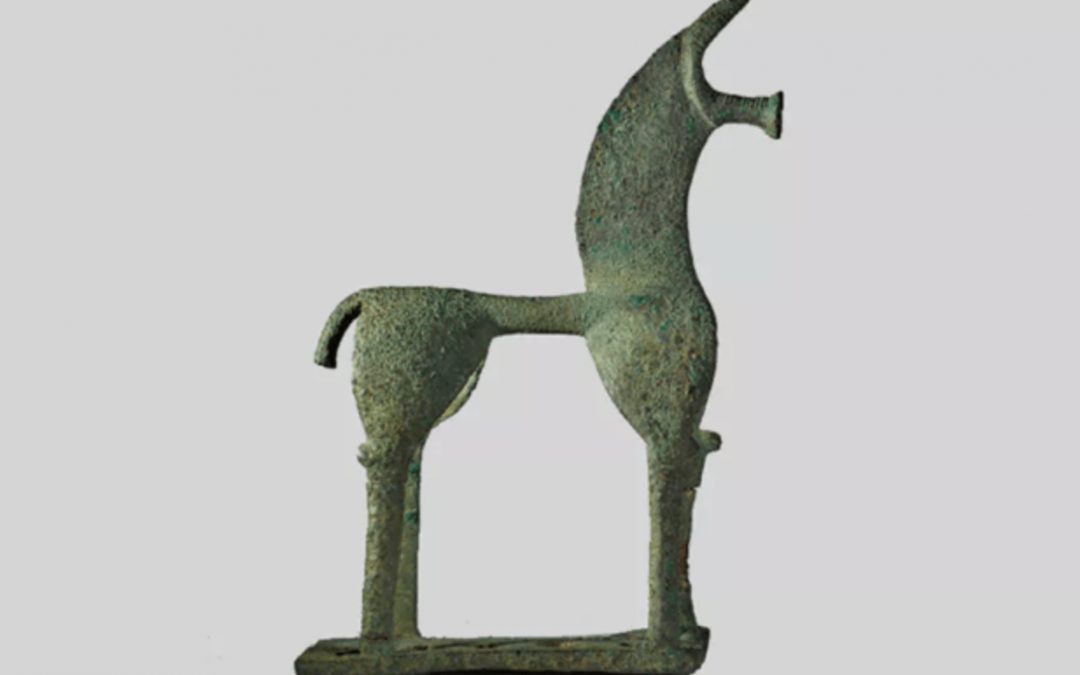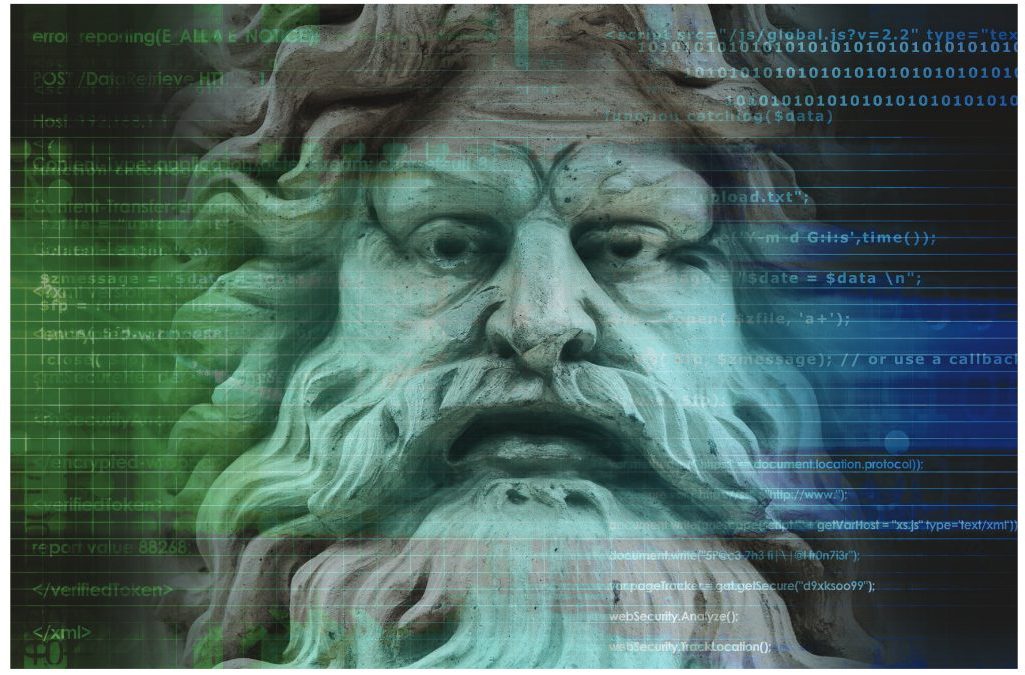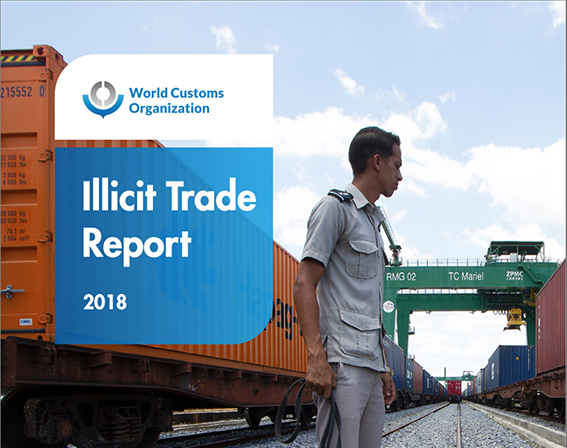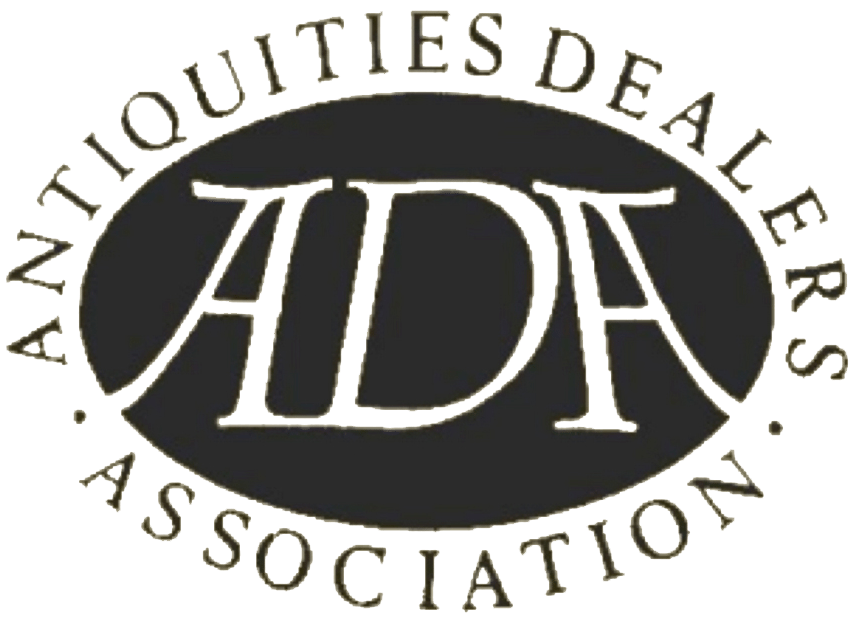
by ADA | Jun 26, 2020 | News, Uncategorized |
A US court has ruled that Sotheby’s cannot sue Greece for damages after the country expressed doubts about the provenance of an important ancient bronze artefact the auction house was due to sell in 2018.
The judgment was made on the grounds of jurisdiction, with the appeal court ruling that the lower court did not have the power to authorise the pursuit of the case by Sotheby’s.
Sotheby’s had launched the suit by arguing that the intervention by Greece demanding that the ancient bronze horse pictured here (image courtesy of Sotheby’s) be withdrawn from the catalogue – but without supplying evidence to support its case – effectively ruined the sale, forcing the withdrawal.
The US appeal court ruling came down in Greece’s favour because the country was not acting out of commercial interests in its pursuit of the bronze horse, which meant that the court did not have jurisdiction over the matter under the Foreign Sovereign Immunities Act (FSIA).
Lawyers involved in the case argued that the ruling meant countries would remain free to challenge sales elsewhere without having to provide evidence of illicit activity.
Although the Greek government and media chose to interpret the ruling as a victory for Greece in claiming the bronze horse, saying the government would now seek its repatriation, Sotheby’s were quick to point out that it had no bearing on the horse’s legal status and that no evidence had been forthcoming to show that it had either been stolen or illegally exported.

by ADA | Jun 5, 2020 | News |
Most widely held assumptions are wrong, it says, leading to poor policy in tackling problem
Report names and shames key figures involved in creating hype and speculation, as well as bloggers and journalists
A major report by one of the most respected independent research organisations in the United States claims that current thinking on the trafficking of antiquities is mostly wrong.
Its findings have prompted it to propose a radical change in direction in the search for solutions.
The RAND Corporation argues that a lack of reliable evidence leads to wild speculation over trafficking[1] and poor policy in tackling the problem[2]. The illicit trade in antiquities is much smaller, opportunistic rather than organised, and more widely dispersed than previously thought, it concludes.[3]
“Our aggregate data suggest that the market for all antiquities, both licit and illicit, is on the order of, at most, a few hundred million dollars annually rather than the billions of dollars claimed in some other estimates … We believe that, going forward, scholars arguing that the illicit market is larger than we suggest here will need to more clearly articulate the means through which these goods are sold.”
Titled Tracking and Disrupting the Illicit Antiquities Trade with Open-Source Data, the report published on May 12 blames bloggers, journalists and advocacy groups for exaggerating the problem to attract headlines, funding and to effect policy change[4]. And it singles out one of the highest profile crusaders against trafficking, New York Assistant District Attorney Matthew Bogdanos, stating that the widely held but inaccurate belief that antiquities trafficking is linked to trafficking in drugs and weapons can be traced back to him as the source.[5]
The report’s findings on this point go directly counter to the claim made by Europol Executive Director Catherine de Bolle in her official statement on the recent Athena II operation.[6]
The report also cites figures of $2 billion for Syria and $3 billion to $10 billion for Egypt quoted by Antiquities Coalition Founder and CEO Deborah Lehr in a Wall Street Journal article as misleading[7], while former AC Chief of Staff Katie Paul, who now heads the Athar Project, is accused of obtaining data and screenshots “with a RAND login to a third-party data provider that were published without consultation or permission”, an action deemed “ethically dubious”.[8]
Major findings show size and nature of problem contrary to popular belief
Major findings in the report, researched with the RAND Homeland Security Operational Analysis Center and partially funded though it work for the US Department of Defense, show that contrary to popular belief, illicit trade in antiquities is largely ad hoc rather than organised and a much smaller problem than previously thought. End markets are global, rather than focused on the West[9], policy and argument “has been dominated by speculation and hypotheses”, while almost no trafficking of antiquities is taking place via the dark web.[10]
It also notes that relatively low sell-through rates of legitimate antiquities at auction and through galleries, combined with the challenges of selling antiquities at all because of compliance, show muted demand, suggesting “that auctions could act only as a limited conduit for illicit sales”.[11]
“This reality that antiquities auctions represent a small market that is not always able to find buyers in well-advertised sales is at odds with the media’s assumption that there is a booming unmet demand for these goods that is capable of supporting a billion-dollar black market,” it concludes.
The report also finds that although fakes are a major issue in general, apparent attempts to traffic illicit items on Facebook are largely illusory, because a large number of the images posted have actually been lifted from recycled news articles or museum websites.[12]
The report concludes that current efforts to tackle trafficking are misguided, ineffective, costly and unrealistic, partially because they are based on inaccurate assumptions.[13]Referring to transnational policing operations targeting traffickers, like Athena and Pandora, the report states: “For high-value goods and key nodes in the network, efforts by police and customs officials can successfully identify and prosecute criminal actors. However, these
enforcement actions are time consuming, costly, and often require significant cross-border cooperation by law-enforcement agencies, which can often be difficult to organize. Instead, a broader-based approach aimed at undermining the trust among illicit actors and in the technologies they rely on could disrupt the illicit market more broadly and cheaply.”
Recognising that “legal standards can be troublesome because a plethora of various laws exist between and within countries, meaning that the correct legal standard that must be met can vary from object to object”, RAND recommends better targeting of clearly identified problem areas.
“…if the market is instead made up of ad hoc opportunists, then there are few centralized nodes that can be targeted to disrupt the whole market,” it argues. “Moreover, expensive and resource-intensive investigations may be inefficient in a market comprising small-scale dealers. In such cases, broader-based disruption tactics, which highlight the risks involved or publicize the damages that looting causes, might be more effective by reshaping the decisions of the individual actors involved.”
It recommends turning to disinformation campaigns: “Messaging campaigns conducted online—for example, through Facebook groups that are used by illicit actors along the supply chain (as discussed in Chapter Four)— would allow destabilizing information to be injected into trafficking networks.”
“ADA chairman Joanna van der Lande said: “As with so many of my colleagues and fellow association members, I am delighted that this report, from arguably the most respected independent research organisation in the US, confirms what we have been saying for years.
“In exposing the propaganda and misinformation, the RAND Corporation also highlights how major international policy has been shaped by dishonest agendas rather than solid evidence, and this is truly shocking when one considers the cost not only to the legitimate art market, but also to cultural heritage protection. Those responsible need to be honest about their motives and be held to account in future if they continue to manipulate and misappropriate the evidence.”
See https://www.rand.org/pubs/research_reports/RR2706.html
[1] See Summary, page xi
[2] See Policy Responses Based on Findings, page xiii and Directions for Future Research, page 97
[3] See Findings, page xi to xii
[4] See Introduction, page 3, and Issues with the Current Approach for Assessing the Antiquities Market’s Relationship to Terrorist Funding, page 10
[5] See Antiquities Trafficking Using Telegram, page 49-50
[6] See press release quote issued May 6, 2020 in relation to Operation Athena II: https://www.europol.europa.eu/newsroom/news/101-arrested-and-19000-stolen-artefacts-recovered-in-international-crackdown-art-trafficking
See also Issues with the Current Approach for Assessing the Antiquities
Market’s Relationship to Terrorist Funding, page 10 and Summary page 41
[7] See Issues with the Current Approach for Assessing the Antiquities Market’s Relationship to Terrorist Funding, page 11
[8] See Footnote, page 43
[9] See Findings, page xii
[10] See Findings, page xii
[11] See Issues with the Current Approach for Assessing the Antiquities Market’s Relationship to Terrorist Funding, page 12, and Measuring the international trade in antiquities, page 73, and Summary page 84 and 85
[12] See Antiquities Trafficking on Arabic-Language Facebook Groups, page 54
[13] See Policy Responses Based on Findings, page xiii and Responding to Illicit Networks, page 96

by ADA | Feb 27, 2020 | News, Uncategorized |
2018 Illicit Trade Report lists Cultural Property as just 0.08% of global illicit trade compared to other risk sectors
The World Customs Organisation’s latest Illicit Trade Report covers 2018, shows a decline in Cultural Property crime, while also demonstrating how it is dwarfed by other sectors of trafficking, such as drugs, weapons and counterfeit goods, accounting for just 0.08% of all reported cases and seizures.
Cultural Property crime includes at least 12 categories of Cultural Property, ranging from household goods to jewellery, books and manuscripts and even flora and fauna. Antiquities form a small part of this category and the WCO does not even record separate figures for them, but does do so for archaeological items.
In summary, the number of reported cases globally in 2018 was 98, down from 155 in 2017. Reported seizures globally fell from 193 to 123, while items seized fell from 15,865 to 15,689. Although currency items seized rose from 9,431 to 13,391, archaeological items seized fell by more than half from 703 to 314.
Spread of cases and seizures
In all, Cultural Property accounted for 0.08% of all cases and seizures across all categories of trafficking. By contrast, Drugs accounted for 39% of case and 32% of seizures, with other categories accounting for shares as follows: Counterfeit Goods (29%/39%); Alcohol & Tobacco (22.5%/20%); Medical Products (4.3%/3.7%); Weapons and Ammunition (2.4%/3.6%) and Environmental Products (2.1%/1.8%).
Published in December 2019, the report records cases and seizures reported through the Customs Enforcement Network (CEN) in in its statistical analysis, although it also includes case studies of other crimes. However, some of these are years old – one dates to 2002, for example.
Analysis of the report by the International Association of Dealers in Ancient Art (IADAA) includes graphics to show the vast difference in sector risks.
With detailed WCO figures for several years running now available, it is clear just how inaccurate claims are of a multi-billion dollar international trafficking network in antiquities, despite such claims driving forward policy and restrictive new laws such as the new EU import licensing regulations.
by Antiquities Dealers' Association | Feb 25, 2019 | News |
BBC World Service, Business Daily: February 20: This 20-minute radio programme was prompted by a complaint from the Antiquities Dealers’ Association about a previous programme aired in September regarding illicit antiquities. It took three months before the BBC finally admitted bias and the failure to speak to the trade while giving prominence to a number of allegations that were unsubstantiated.
Having admitted the failure, the BBC did its utmost to redress the balance, even widening the debate on how what it refers to as Zombie Statistics are being used to drive propaganda across many fields of interest, including the antiquities debate.
ADA and IADAA adviser Ivan Macquisten is interviewed early on in the programme explaining how the failure to check sources for claims has led to an ingrained culture of disseminating fake news and this is affecting policy. This is aggravated by the fact that those to blame are sometimes influential international bodies whose standing lends unjustified authority to these statistics. These include UNESCO and Interpol, as he explains. The response from UNESCO’s Director for Culture and Emergencies, when challenged over the organisation’s use of zombie statistics to back its campaigns for greater restrictions is not to defend the statistics, but to argue that they don’t matter. As British statistics guru Dr Tim Harford counters, however, what also happens is that you often get ‘policy-based evidence’, where a body decides what it wants to do and then looks for the evidence to back it up. “If you think right is on your side, then you’re not going to be too careful in scrutinising claims that fit in with your preconceptions,” he says. “This is confirmation bias.”
Harford disagrees with the UNESCO official, arguing that it is important to take statistics seriously because they are essential for understanding the world. “If people start treating them in a very cavalier way, that spoils it for everybody, because then people start not trusting statistics.”
by Antiquities Dealers' Association | Jan 25, 2019 | News, Uncategorized |
The World Customs Organisation published its latest report into illicit trade in December.
The size of any problem can be assessed under four variables: the number of cases, the number of seizures, the volume of seized material and the value of that material. As the ADA and IADAA have always argued, by any of these variables, Cultural Heritage – of which Antiquities form only a part – barely registers as a problem area among the risk categories listed.
IADAA has conducted its own potted analysis of the 205-page WCO report as a user-friendly guide to the findings, which includes a direct link to the original report for verification purposes.
As the analysis and the original report show, at one end of the scale Drugs-related cases make up 47.7% of global trafficking; at the other, Cultural Heritage represents 0.2%. Likewise, when it comes to the number of seizures, Drugs accounts for 42.8%, while Cultural Heritage covers 0.2%. The next smallest category in each of these measures is Environmental Products, which accounts for 2.7% and 2.3% respectively. Even these figures are, respectively, 16 times and 14 times larger than the Cultural Heritage measures.
All of the above also needs to be taken in the context of a more proficient international Customs operation that is better able to cope with Cultural Heritage than ever before, according to the WCO, with twice as many countries submitting data as the previous year (25 compared with 13). Despite this, the number of cases has slightly fallen, while the number of seizures has only risen from 158 to 167. Compare that to over 40,000 cases and over 43,000 seizures involving Drugs.
Comparative values
An exact assessment of values is not possible because the information is simply not available – although the report estimates the global illicit trade in Environmental Products to be worth between $91 billion and $250 billion. What is clear, however, is that, Cultural Heritage aside, the value of material seized in every other category must be worth at least in the hundreds of millions of dollars if not more.
When it comes to Cultural Heritage, although the number of cases has fallen and the number of seizures has only risen slightly, the number of items seized has increased from 9,931 to 14,754. These include all types of items across the range of categories covered by Cultural Heritage, from books & manuscripts and paintings to household items, jewellery, weapons, engravings and lithographs, as well as film and sound archives, the last of which makes up a very large number of items seized (3,169, according to the WCO report).
Antiquities make up 8725 items, a rise from 8005 in 2016.
It is reasonable to assume that the WCO will include images of its most important seizures in the report. If so, then the quality of what has been seized is generally very low grade indeed. Bizarrely, they include a haul of long playing records seized in transit from the Netherlands to Turkey. As it is not illegal to export LPs from the Netherlands, it is not clear why they were seized.
The overwhelming majority of Antiquities items pictured are broken potsherds and coins – items that would not be covered by the UNESCO Convention.
As the IADAA analysis points out: “The only items of significant value pictured in the report have nothing to do with customs work, nor were they seized, but voluntarily returned when their owners/holders discovered that they might be tainted, so it is misleading for them to have been included”.
In summary, although this is not a scientific assessment, if the images used to illustrate the quality of antiquities seizures in the WCO report are anything to go by, a generous over-estimate of the value of items seized would be around $500,000. To put that in context, that is around 0.001% of the value of the next smallest category at most.
How Interpol are adding to the problem
If Customs are much more efficient and twice the number of countries – from all regions – are submitting data, where is the massive haul of cases and seizures one should expect if Cultural Heritage trafficking is the problem that anti-trade campaigners, politicians and others would have it? As the WCO itself concluded in its 2016 report: “As Customs officers become increasingly proficient in seizing both large and small shipments of cultural objects, the data can suggest that illicit trade is on the rise when, in reality, levels of trafficking may be holding constant or even decreasing.”
This also gives the lie to Interpol’s claim (as published on its Works of Art Crime home page) that “The black market in works of art is becoming as lucrative as those for drugs, weapons and counterfeit goods” – a claim it confusingly contradicts on the FAQs accessed via the same page. This is important because the European Commission and Parliament, among others, have used this headline claim by Interpol as evidence justifying the introduction of stringent new import licensing regulations in the EU.
IADAA was able to demonstrate during the consultation and negotiations over the import licensing proposals that even the European Commission’s own researches failed to find any problem at all, yet it insisted on pressing ahead with unnecessary and damaging legislation.
This summary analysis is being forwarded to those conducting the follow-up study commissioned by the European Commission after it expressed doubts about its original research. Hopefully these WCO statistics and other findings will make a difference.
by Antiquities Dealers' Association | Nov 28, 2018 | News, Uncategorized |
The ADA has been working closely with IADAA to contribute important last-minute contributions to the Trilogue negotiations in Brussels on the import licensing issue.
The talks must settle on a proposal that compromises between proposals and amendments from the European Commission, Council of the European Union and committees within the European Parliament.
We still have significant concerns over compromise amendments being put forward for the final vote and so have joined with IADAA, CINOA and the European art Market Coalition (EAMC) to present a series of comments and objections for the art market to the office of Daniel Dalton MEP, rapporteur of the proposals, at his request, for consideration.
Key areas of concern included potential human rights breaches occasioned by proposals to restrict how owners may keep antiquities; further rights breaches based on proposals to reverse the burden of proof in showing an item to be untainted; inconsistencies with the application of the UNESCO Convention; value thresholds for qualifying works; delays in processing of licence applications and importer statements; and concerns over possible enforcement prior to a compulsory electronic system being fully operational.
A number of important questions remain on top of this, such as who will provide the necessary expertise for customs and how valuations will be conducted and confirmed. At present, the proposals are so complex and confusing that in places they contradict each other, which will not aid compliance. We have asked for any final proposals to be made simple, clear and user-friendly.




Recent Comments